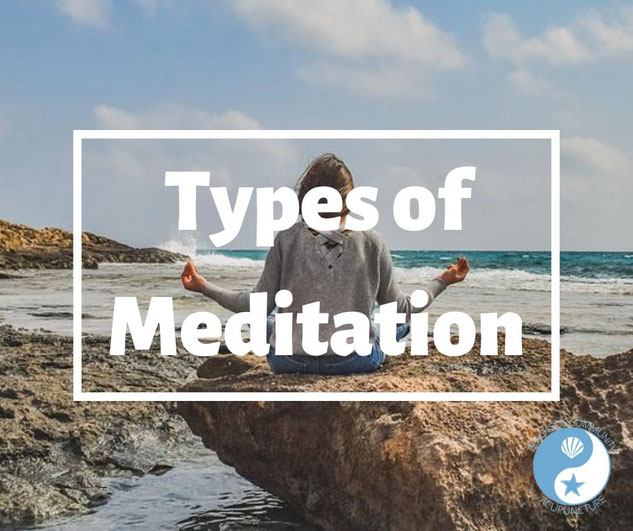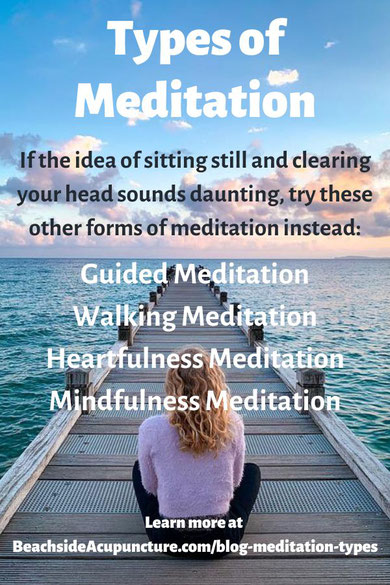
Most people think that meditation requires sitting completely skill and focusing on nothingness to clear out all thoughts. Masters of meditation may accomplish this after years of practice, but for the rest of us, this seemingly simple task can be very daunting! If you've tried meditation but found it too difficult - or if you love meditation but are looking for other ways to pursue it - this blog will cover other options that may better fit your needs.
Guided Meditation
Focusing on your breath or heartbeat is a cornerstone of meditation...but sometimes that's easier to do when someone is telling you to do it over and over. Guided meditations can be as simple as that, but others can involve imagery or even focus on specific emotions or outcomes, such as releasing anger or improving fertility. They may involve affirmations, visualizations, and other mental exercises that not only calm erratic thoughts but also work with the subconscious mind. Search YouTube or any meditation app for a meditation that encompasses your specific intention, or even search for a meditation for a specific length of time. There are options for when you only have five minutes to spare; there are also options that last for hours to help with sleep. Pay attention to the ones that hold your focus well and figure out what resonates with you. You might find that you prefer a certain timbre of voice, a specific music in the background, etc., and from there you can look for other meditations that share those similarities.
Walking meditation
If having a still body is a bigger issue than having a still mind, walking meditation may be up your alley. Find a relatively big space - either indoors or outside (where you can also practice earthing!) - and make sure it's clear of any obstacles. Take very slow, controlled steps and stay focused on every little movement that your legs and feet make as you balance, feel your heel and toes touch and then leave the ground, lift your leg to bring it forward, etc. Paying this much attention to your actions can be meditative in itself, but you can also add in mantras or affirmations as well. Think or say a word like "peace" when you place your foot on the ground, or repeat a phrase like, "I am strong," as you raise your leg. Continue walking/meditating back and forth within your space until either your time is up or you feel that you've achieved your goal for the exercise, perhaps feeling calmer about a stressful situation or noticing that your body is less tense.
Heartfulness Meditation
While meditation has great health benefits for those who practice it, it can be also used to bring harmony to others. Heartfulness meditation involves sending blessings to your loved ones and visualizing them sending blessings back to you. Search YouTube for guided heartfulness meditations, or find a comfortable place where you can rest without distractions. Picture one of the people who brings meaning to your life, and think or say phrases like, "I wish you health," or "I wish you happiness." Before you move on to another loved one, imagine that same person looking deeply into your eyes while repeating the same words back to you. Do this for your family members, friends, co-workers, or even people that you do not like! Sometimes peaceful intentions like these can facilitate the forgiveness of grudges, even if you have no actual contact with the person in question.
While heartfulness meditation usually takes a bit of time, you may also break up moments of stress with a mini-version by sending simpler messages good will to others. For instance, if you're frustrated with a long line at a grocery stores, choose a stranger and think of something happy that you'd like to happen for them. If that's too much, just think the words that you'd use during a full heartfulness meditation without the vivid visualization. Focusing on others can break the cycle of ruminating thoughts, and purposefully employing positive thinking for the good of someone else can lead to a more positive outlook about your own situation.
Mindfulness Meditation
Mindfulness as a meditation draws attention to the sensations elicited by physical surroundings rather than stirred up emotions caused by racing thoughts. This type of meditation can also be guided, but it's an easier one to practice on your own as well. Relax into a chair - or anywhere else that you're comfortable - and enhance awareness of the present moment by noticing everything that your skin touches, such as variations in the fabric of your clothes, the ground on which your feet are resting, the chair against your back, etc. Move through your other senses, taking time to savor any noises, sights, smells, and tastes around you. Rest in this state of heightened awareness for however long you'd like.
Mindfulness can also be practiced as an exercise almost anywhere: Mindfully wash your dishes by tuning in to the temperature of the water on your hands, the smell of the dish soap, and other minute details; be mindful during a workout by paying special attention to all of the sensations that you experience as you push your body; etc.
This also plays into the "54321" technique for reducing anxiety. If you are feeling overwhelmed or are starting to panic, follow these steps:
- List five things that you can see around you
- List four things that you can touch around you
- List three things that you can hear around you
- List two things that you can smell around you
- List one thing that you can taste
Acknowledging your physical surroundings brings your mind and body back to the present moment, grounding it so that it can settle down.

There are a myriad of other types of meditation out there, and if you don't particularly care for any of the ones discussed in this blog, we encourage you to research others until you find what works best for you. No matter what you choose, always keep in mind that meditation is like mental exercise. It takes practice, time, and patience to progress, just like physical exercise does. Start with quantities of time that feel natural to you and increase them as you become more comfortable with meditation. Don't fret if it takes you a while to get the hang of it, and remember that even small moments of peace amid swirling mental chaos can have substantial long-term benefits.

Kathleen Ketola is a Licensed Acupuncturist and the owner of Beachside Community Acupuncture. She loves providing affordable acupuncture to the residents of McKinney, Texas, and surrounding cities like Prosper, Frisco, and Plano, but she also enjoys educating the general public on how acupuncture and Traditional Chinese Medicine (TCM) can treat everything from pain to infertility to stress and beyond. Click "Book Now" at the top of this page to book an appointment or feel free to contact her at (214) 417-2260.








